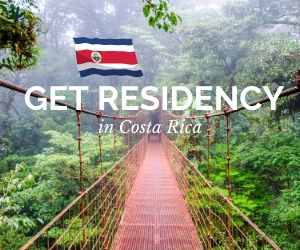Ace is right the best wildlife viewing is generally done either at dawn or dusk and even during the rainy season most rain doesn't start until the afternoon or perhaps late morning. A bigger factor in terms of seasons when it comes to birding is when birds nest and that has absolutely nothing to do with when it rains. For example, the nesting season for Scarlet Macaws at Carara (near Jaco) begins in September. OTOH, you should be there at a perfect time to see the elusive and irradiant Quetzal, whose breeding season runs from March-June.
Be sure to bring your own binoculars, but the guide will probably have a much more powerful (and expensive) monocular/telescope than any of you probably have (take turns and let everyone have a chance to look).
Also try to walk quietly, speak little or very softly and listen carefully. First of all, exceptionally noisy groups will scare off any nearby wildlife but also the ears are as valuable a tool as the eyes when it comes to spotting things. In fact, many birds are easily heard but not seen. The three-wattled bellbird, which inhabits the cloud forests, is rarely spotted in the mist-shrouded treetops, though the male's eerie call is often heard. I'll never forget the first time I heard a howler monkey. I was roused from my sleep in the middle of the night by this ferociously loud howl. I thought there was a bear or something right outside my cabin but was told by my guide the next day that they were over a mile away. I can only imagine what they sound like close up. Here's a great link with sound samples of many common CR wildlife that you can study and learn from before your trip.
http://www.naturesongs.com/CRsounds.html.
Finally, knowing the vegetation will help tremendously in being able to spot wildlife as various birds and animals tend to associate with different plants. For example, the quetzal has a particular penchant for the fruit of the broad-leafed aguacatillo (a kind of miniature avocado in the laurel family), which in turn depends on the bird to distribute seeds. OTOH, many guide books mistakenly tell you that the macaw get their names because they supposedly feed on the fruits of the macaw palms. In fact, they rarely eat fruits, but prefer seeds and nuts. Mammals are the same thing. One way to identify where monkeys may be is to look for the discarded husks of the fruits they eat as well as their crap. Messy creatures. Another classic example is the sloth which prefers to hang out in cecropia trees, which is its favorite food source. When the sloth makes its once a week trek down to the ground to take a crap, they usually do it at the base of those trees, fertilizing its own food source in yet another example of the intricate cycle of the forests.
Don't worry too much about learning all this ahead of time. A good guide should know all this, but after enough trips into the rainforest you'll probably be ready to guide a few yourself.










